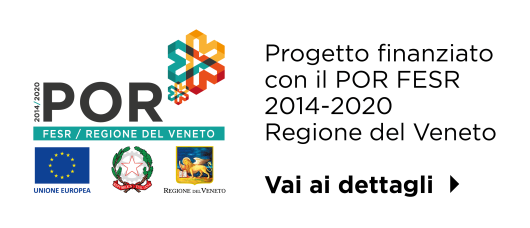-
- Qualità e Sicurezza Alimentare
- Cereal Docks Group Lab
- Sicurezza Alimentare
- Certificazioni
- Vai a Qualità e Sicurezza Alimentare
- Ricerca & Innovazione
- Ambiti di ricerca
- I business del futuro
- Pubblicazioni
- Tesi in azienda
- Corporate Venture Capital
- Open Innovation
- Via a Ricerca & Innovazione
CO2 reduction at the Port of Venice, the good policies Cereal Docks Marghera
It was presented in the last few days the study on best practices for CO2 reduction carried out within the SUPAIR project launched by the Northern Adriatic Sea Port Authority (NASPA) of the ports of Venice and Chioggia. The project deals with the reduction of emissions from navigation and port operations on land through an integrated approach, which aims to improve the ability of port authorities to plan and implement low-carbon and multimodal transport and mobility solutions.
The discussion, started in May 2019 with the calling of the first Focus Group, led the Port Authority to draw up the first Port Environmental Energy Plan (PEAP), with the perspective of monitoring the improvement of the total energy efficiency of the port through a continuous balancing exercise between the application of good practices to make port operations more sustainable and increase the competitiveness of the Venetian seaport.
Thanks to a benchmarking activity, a series of best practices have been identified at international level regarding measures and interventions to make the port operations sustainable and energy efficient. In addition, a tool for the analysis of current and future consumption has been developed also in cooperation with port terminals, with the aim of monitoring and sharing the progress made year by year.
The study on best practices related to CO2 reduction, conducted in collaboration with experts and consultants of the E&Y Advisory Spa group, involved ten companies operating in the Port of Venice and concerned with the project area, including Cereal Docks Marghera. According to the analysis carried out, the Cereal Docks terminal in Porto Marghera is particularly efficient in terms of environmental impact for loading, unloading, handling and storage of goods, thanks to the use of state-of-the-art, fully electric equipment and systems.
[av_image src="/uploads/2020/06/dK6adw6g-1030x687.jpg" attachment='11557' attachment_size='large' align='left' styling='' hover='' link='' target='' caption='' font_size='' appearance='' overlay_opacity='0.4' overlay_color='#000000' overlay_text_color='#ffffff' copyright='' animation='no-animation' av_uid='av-p4ftz8' id='' custom_class='' admin_preview_bg=''][/av_image]
From the energy point of view, the plant is basically independent in the production of electricity thanks to the installation of a methane cogenerator with a 4.4 MWh capacity that also represents a source of hot water, generated by the cooling cycle of the engine, used in the early stages of seed processing in preparation and which allows a significant reduction in consumption of primary sources in the seed processing phase.
In recent years, the plant has been completely renovated and upgraded with over 60 million euros investments. It is equipped with silos and tanks with a 80 thousand tons storage capacity, which feed an oil, flour and lecithin latest generation extraction plant of about 1 million tons / year of processed seed. This important production capacity is supported by the new dock overlooking the West industrial canal, with a water surface that allows the docking of Panamax ships up to 240 meters long with the related benefits in terms of efficiency. The shore crane has also been replaced with a more modern mechanical outlet, able to unload a transoceanic ship in just 3 days.
The transfer of finished products from the terminal is carried out mostly by road. Although the railway system is present, it is not widely used due to the layout of the terminal which forces a fragmentation of the train with the related inefficiencies in terms of loading time and many customers not connected. To date, there are also some inefficiencies due to delays in the railway service.
Nevertheless, when possible this type of transport is preferred, as it has less impact from the point of view of emissions and road traffic.
Potential opportunities for development and energy efficiency include a further increase in rail transport, including the use of swap bodies for combined road-rail transport.
"This study confirms the need to strengthen the port infrastructure, also in view of sustainability, explained Mauro Fanin, President of the Cereal Docks Group. The road conditions to the mainland are also crucial, given the logistic needs of all the companies that receive the raw materials from the West industrial canal, process and then distribute them starting from the 'Via dell'Elettricità' road axis and its branches. Finally - ended the President - multimodality: a strong integration between water, rail and road is the goal to look at".
Transform to sustain the future
Qualità e Sicurezza Alimentare
Ricerca e Innovazione
2025 CEREAL DOCKS SPA Società Benefit - via dell'Innovazione 1 36043 Camisano Vicentino (VI) REGISTRO IMPRESE DI VICENZA - CF/P.IVA 02218040240 – CODICE ISO IT02218040240 – R.E.A. VI 215209 – CAP.SOC. 10.000.000 EURO INT.VERS.- SOCIETÀ A UNICO SOCIO


